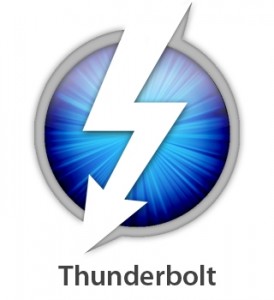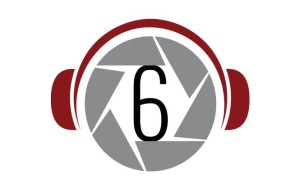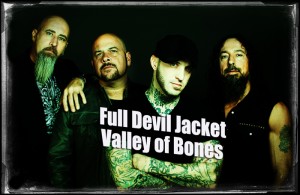Fatherly Advice: The Basics of Retirement Planning
12 min readDad taught me a lot of things growing up in small-town Minnesota. Dad taught me how to tie a tie, change my oil, catch panfish and walleye in the many MN lakes, and he also taught me nearly everything I know about money. He told me that in order to control your finances you have to understand how money works, and he should know. He’s a Certified Financial Planner (CFP) who helps others plan for their future through insurance, mutual funds, 401(k) plans, Roth IRAs, and other investment vehicles. Dad came from a military family, a big military family, and never got to go to college, but that didn’t stop him from beating the system and making a healthy enough living to put all four of his own children through college. I guess I say all this to give him credit because I’m proud of my dad, but also to put some credibility behind what I will tell you about investing. Everyone will have advice for you, and most of it is well-intentioned but not very good.
Risk and Return
All investments, whether you realize it or not, have risks and returns, and understanding that is key to taking control of your money. Gamblers understand this truth intuitively; you need to risk money in order to get a return. An extreme first example of risk and return is Blackjack. At a casino Blackjack table, your risk is very high as more than half the time the house will take your money, but when you win, you double your money. High risk, high return. In this case, risk is higher than return, so in the long run, you will lose money, even with perfect strategy. Blackjack is a poor investment.
A second example of risk and return is a savings account, which is a very low risk place to put your money. Banks don’t fold often and, when they do, there are federal safeguards (FDIC) in place to protect you. I personally don’t know anyone who has lost money in a savings account. Of course, they usually have a very low interest rate that generally won’t keep pace with inflation. A savings account or money market account is a good place to keep money for emergencies or short term goals but a poor choice for retirement or other long term goals. They are very low risk but also low return – a better investment than Blackjack, to be sure.
A third example of risk and return is a corporate stock. The risk is higher, because many companies go bankrupt and stock value goes to zero (like one employer I worked for), or goes down. But the return may be high as well and, on average, well-run, established companies get a good return to their shareholders.
Most people focus on the return without understanding risk. In the dot-com crash we saw, many people were focused entirely on return without understanding the risk. A high return stock investment is generally a risky one, and buying individual stocks is like playing blackjack. Only a very select educated few will be able to make truly informed stock decisions after considering the hundreds of variables that go into a stock price. If you happen to be one of these millionaires or billionaires (that means you Mr. Buffett) you can stop reading this now.
Controlling Risk
My father taught me that you need to learn to control risk while maximizing return, and that the best way to do this is by diversifying your money into many different investments. If you have stock in every company in the economy, and a few go bankrupt, it won’t hurt you much. Learn these rules (thanks Dad):
Rule #1. “If it looks too good to be true, it probably is.”
Rule #2. “Past performance is no indication of future return.”
Rule #3. “Diversify and dig in for the long haul.”
These aren’t just good pieces of advice for a 401(k), these are financial truths that will help you in life. If someone says, “Would you like to make $50/hr while working from home?!” see rule #1. If someone says, “By working for you can make thousands a week without doing anything!” simply refer back to rule #1. When your buddy says, “I made $5500 at the casino last weekend, wanna come along tonight?” refer to rule #2. Mortgage agents and realtors will tell you to, “Buy as much house as you can, because houses are the safest investment!” – refer to rule #3. You don’t want all your money tied up in one thing, whether it’s Enron stock, shorefront Florida real estate, lottery tickets, or NASCAR collectible plates. Sure, you could maximize your return by putting all your eggs in the best basket possible, but you could also lose it all. If you’re reading this article, you don’t want to bet your future on the roll of the dice. A 401(k) is a retirement vehicle that may contain many investments choices. Your employer will partner with a mutual fund or investment company to offer you these choices, but the ultimate selection of what to invest in is up to you. Your plan will be as strong or as weak as you make it. Fill it with company stock, an overabundance of high-return tech stocks, or past winners, and you might find yourself high and dry. So keep these rules in mind as you build your future in your 401(k).
Tax Deferral
In case you are wondering what I mean by “tax-deferred,” it means you do not pay income taxes on your 401(k) contributions until you withdraw them. Your contributions come out of your paycheck before taxes. That’s an extra third to a fourth to invest right there. You do like free money don’t you?
So how do you start a 401(k)? Chances are, if you have a corporate job, your company is already offering a 401(k) plan. If not, pressure your HR department to start one. Stroll on down to HR, get the forms, attend the meetings, and get in now. Most companies will “match” your contribution up to a certain percentage, and you would have to be crazy to not get that free money. In case you missed it, I said free money again. Are you interested yet? If you don’t have a corporate 401(k), see your friendly local CFP.
Not paying taxes on the money before it goes in is good, but it gets better. You also don’t pay taxes on your gains while the funds mature. That means that those gains are free to gain even more. Now your money is working for you, and that is even more free money.
If you’ve been paying attention, when I said free money, you immediately thought of rule #1. Either pat yourself on the back or crank the skepticism up a notch. All return comes with risk. 401(k) plans have risk too, and they have a catch. The catch is you cannot withdraw from the account before retirement age without paying very heavy penalties. So make sure you invest as much as you can without investing so heavily that you need to withdraw from it (I contribute my maximum: 15% of my gross income). Read this aloud: withdrawing money from a 401(k) plan before retirement is a very bad idea.
I mentioned risk, and it exists because you are putting stocks, mutual funds, bonds, etc. into your 401(k). The good news is that risk can be managed and minimized by following a few simple investment principles such as diversification and dollar cost averaging. This brings us to Asset Allocation.
Asset Allocation
So, if you have a 401(k), how should you allocate your funds? You’ll probably get to choose between a dozen and two dozen funds if you’re on a managed corporate plan, and you should take a mix of these funds. What kinds of funds might you put into your 401(k)? There are three basic kinds of funds: stocks funds, bond funds, money market funds. You may also have the option of having your contributions or the company match invested in the company stock. This may be okay to a point, but limit your percentage to 10 or 15 percent. Bonds historically have not performed as well as stocks. However, bonds offset this lower return with generally lower risk. Bonds tend to do better when stocks do badly, and vice versa. Balance is the key.
This doesn’t mean I advise trying to “time” the market – jumping into stocks when they are on their upswing and then back to bonds to weather the recession. This seldom works. Of course, if you are already a millionaire and know more than me, go right ahead. What this does mean is that stocks are more aggressive and bonds are less so. As you near retirement age, you’ll want to move from more risky, aggressive funds to safer, lower-risk bond funds or funds that blend in some bonds with the stocks. This way you won’t lose a third of your retirement account the year before you retire. Many people who demanded (against the advice of their CFPs) to get into the tech hoopla ended up with severely diminished retirement accounts.
If you are like me, a young guy, you will probably want something aggressive. If you have more than 10% in bonds, you are probably being too conservative, but you will experience less fluctuation. If you are more aggressive, you’ll get better gain over the long haul. However, you have to be prepared to see the fund go up and down on paper. Most stock funds are a blend of dozens, even hundreds, of company stocks but they fall into certain types that can be described by a market capitalization and a style.
Market Capitalization:
• Large-Cap – a fund of large, well-known established companies – the top 70%
• Mid-Cap – a fund comprised mainly of the next 20% of companies
• Small-Cap – roughly the smallest 10% of companies
Style:
• Growth – a growing company, a popular buy, but could be overpriced
• Value – priced low compared to earnings, either a bargain or poor performer
• Blend – a blend of both growth and value
Just because a fund averages out to a large-cap growth, doesn’t mean that it doesn’t have mid-cap blend stocks in it or some bonds. You’ll have to look at its prospectus to know for sure. Most will have a pie chart showing you the breakdown.
Other Fund Types:
• International – overseas funds (will have a size and style as well)
• Industry Specific – a Tech fund, a Medical fund, or a Steel fund, for example
• Indexed Funds – Indexed funds buy stocks that mimic a market index, such as the S&P500. Indexed funds generally have lower administrative expenses because there is no research or stock evaluation. The fund simply buys everything in the index. The good, the bad and the ugly.
• Managed funds – try to beat the index by researching and selecting the best stocks within the index. Not an easy task.
• Asset Allocation funds – diversifies into various investments based upon the risk level. Conservative, Moderate Conservative, Moderate, Moderate Aggressive and Aggressive.
• Lifestyle funds – Asset Allocation funds that adjust automatically as you near retirement.
• Investment Grade Bonds – as mentioned before, safety can be found in Government bonds or high quality corporate bonds. The cost for safety is a lower return.
• High Yield (Junk) Bonds – don’t let the name scare you. High Yield bonds offer better returns that investment grade bonds, but carry more risk.
• Cash – liquid assets that have very stable prices like a Money Market account
So how should you allocate your 401(k)? It depends on your aversion to risk and your age. Can you stand to see big fluctuations over time in your account value, while steadily socking away a large chunk of your income? You may have high risk tolerance. On the other hand, if you feel the urge to check your funds daily and grind your teeth over every loss and it becomes a source of stress, then you are risk averse. As I mentioned before, the closer you get to retirement, the less risky you should get with your funds, unless you don’t mind postponing retirement a few years.
If you have high risk tolerance, you will want an aggressive portfolio, with a total of less than 5% in bonds, no cash, and 95% or more in stock funds. • 50% Large-Cap (20 Value, 10 Blend, 20 Growth)
• 20% Mid-Cap (10 Value, 10 Growth)
• 20% Small-Cap (20 Growth)
• 10% International (Large-Cap Growth if you can choose)
If you are conservative, close to retirement, or risk-averse, follow this rough template:
• 25% Large-Cap Blend
• 15% Mid-Cap Blend
• 10% Small-Cap blend
• 40% Bond funds
• 10% Cash funds
>A financial planner can help you find a mix that is right for you, and this is only intended as a very rough guideline to get you thinking about your asset allocation. My allocation is the most aggressive one I know of, as I am young and risk tolerant. This has netted me some spectacular years and some real awful dry spells as well. Yet, in the seven years I’ve participated in the plan, I’ve had the highest rate of return of everyone I’ve talked to and have far more stashed away for retirement than people who make twice my salary but don’t contribute as much or have an aggressive asset allocation.
Summary
Here’s the most important things to keep in mind with your 401(k).
• Contribute as much as you can, as early as you can
• Never withdraw from it. If you change jobs, roll your 401(k) to your new employers plan, or roll it over to an IRA
• Diversify with the best asset allocation possible for you
• Limit the use of your own company stock to 10-15% of the value of your plan. Better yet, buy it outside of your 401(k) as a retirement supplement.
• Be as aggressive as you can stand
• Become less aggressive as retirement nears
• Stay in touch with your financial planner and review your asset allocation after major life changes, salary increases, or every few years.
Finally, bear in mind that putting your sole hope in a 401(k) is a serious problem. You need more than just a 401(k). You’ll need to diversify your whole life to make your retirement an enjoyable and fruitful time. Money alone is nothing. You should also be ‘investing’ in your community, in your family, in your churches. These are the support structures you will need in your golden years as your friends slowly leave you. You should have a Will, good insurance, and a good health plan. This, in tandem with your 401(k), will mean you are less of a burden on your loved ones as you age. You should consider owning a home or land, as a buffer to a possible collapse of society. You should expand your skill-set beyond your career to include new hobbies, survival skills, artistic endeavors, and sports. You should eat well, exercise regularly, and get lots of sleep. Quit smoking, moderate your drinking, cut the fat, cholesterol and empty calories. Eat your greens, stay in school, don’t do drugs, drink your milk. Sound familiar?
After all, there is no sense in saving for retirement if you won’t be around to enjoy it or you are too sickly and frail to be active. Planning for retirement is a whole lifestyle of planning for the future while living in moderation in the present. I expect my aged years to be a time of fruitful ministry, and I’m planning for it to be that way. I know some people who “Got my mission trip out of the way before we had kids” as if you go out to do ministry once in life, punch your timecard, and call it a life.
I want to have a pile of money, like Scrooge McDuck, but not to swim in it. I want fund great ministries for the kingdom. Think of all the people who would go to seminary if only they could afford it? Think of all the people who would eat a meal if only it were put before them? Think of all the yearning people who would accept Christ into their heart if only a missionary would be sent to them? God has a way of providing for missionaries, of making miracles happen in their fund raising, and I want to be a part of that miracle. I want to be like Levi, who threw a huge party for his sinner friends after Jesus called him, and many heard Jesus’ teaching. I want to be like Joseph of Arimathea, who could just donate a tomb when God called him to. Like Paul, I don’t want to be a burden on society as I do my ministry but instead support myself as I give freely to others.
Give God control of your retirement plan. I challenge you to think of how this can be to the benefit of the kingdom. I’m not saying you can’t have leisure as a retiree. In fact, I plan to pursue many hobbies myself, but that replaces work, not ministry, in life. To have the time to read the bible leisurely in the morning, walk with God in the cool of the day, and continue growing in faith as you prepare to pass on to heaven.
Of course, the ultimate retirement plan is God’s retirement plan. You can have a great retirement on earth, but if you spend eternity away from God, what is the point? Isn’t the point of this life to reach others and bring them along into that final retirement, that final rest from our long labors? With free time, financial, and personal independence, your ministry in your golden years could be the greatest years of your life, for you and for many others.






